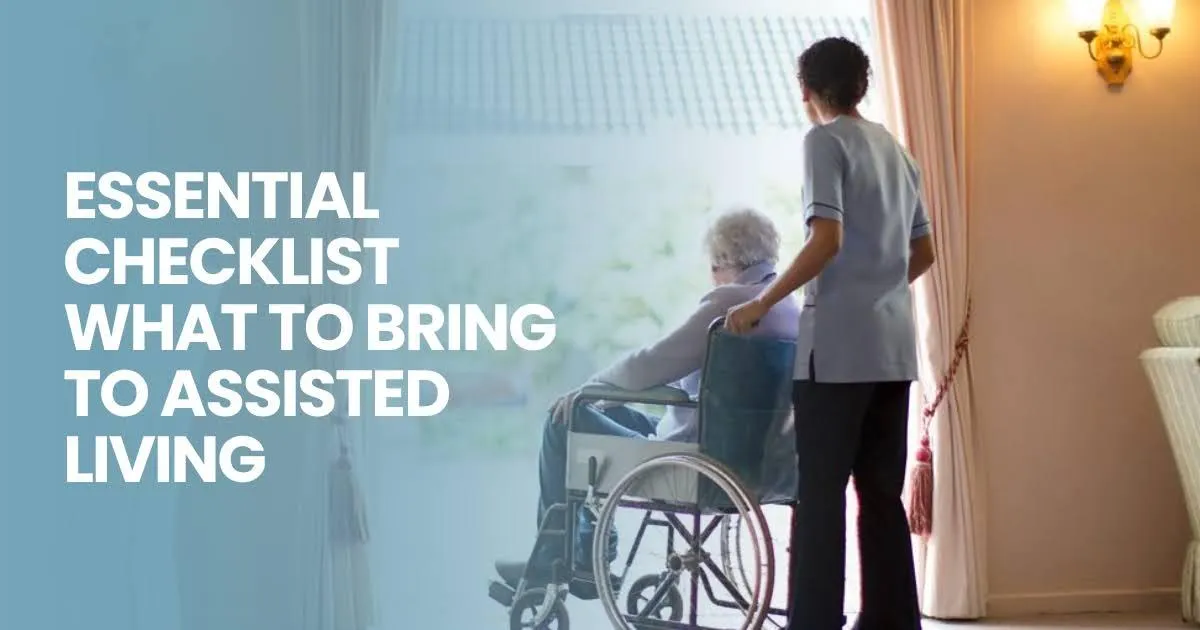
Essential Checklist What to Bring to Assisted Living
Moving into an assisted living facility marks a significant life change, but it doesn’t have to be overwhelming. Preparing your loved one with the right items is key to ensuring their move is as smooth as possible. Whether you are moving in or helping a loved one, a checklist for the assisted living facility helps ensure that you don’t forget anything.] Knowing exactly what to bring and what to leave behind will make the transition easier and more comfortable.
When you’re moving to an assisted living facility like The Heights Inn, it’s essential to pack the right items to meet both personal and medical needs. This guide outlines everything you should include in your assisted living move-in checklist, helping your loved one feel at home faster and easing their transition.
The Importance of Having a Checklist for Assisted Living Facility
A checklist for assisted living facility is more than a list of things to bring. It’s a tool to help organize and streamline the move-in process, ensuring that your loved one has all the essentials they need. This checklist is helpful in preventing last-minute stress and confusion. By having everything planned ahead of time, you can focus on the other important aspects of the move, such as emotional support and settling into the new environment.
The checklist also serves as a guide for those moving into assisted living for the first time. If you're unsure about what to pack or leave behind, this list will help clarify the items your loved one will actually need. A thoughtful approach to what to bring makes the transition smoother and helps create a sense of comfort in a new, unfamiliar environment.
Step 1: The Essentials for Your Assisted Living Move-In Checklist
The first step in preparing for assisted living is to gather the basic essentials. These items are necessary for everyday living and will help your loved one feel at ease in their new space. Here's what should be on the assisted living move-in checklist for the basics.
Clothing and Footwear
Clothing should be comfortable, practical, and suitable for both indoor and outdoor use. Bring a combination of everyday wear, sleepwear, and clothing for special occasions. Don't forget the essentials such as socks, underwear, and appropriate shoes. Opt for shoes that are easy to put on and take off, like slip-on shoes or velcro-strapped sandals. Slippers with non-slip soles are also important for safety.
Bedding and Linens
Personal bedding such as sheets, blankets, and pillows will help your loved one feel more at home. You’ll want to bring a set of linens for the bed, as well as towels and washcloths. It’s important to ensure that the linens are familiar and comforting, which can aid in making the transition smoother. If your loved one has specific preferences regarding bedding, such as a particular pillow or blanket, be sure to pack those.
Personal Care and Toiletries
Pack all necessary personal care items, such as soap, shampoo, toothpaste, and a toothbrush. If your loved one uses specific hygiene products, like skin creams or special shampoos, don’t forget to bring them. Consider including things like lotion, deodorant, and tissues. Remember, some places like The Heights Inn offer toiletries. Still, it’s a good idea to bring items your loved one prefers.
Medications and Medical Supplies
One of the most important things to include in your checklist for assisted living facilities is medications. Bring an adequate supply of your loved one’s prescriptions and any over-the-counter medications they may need. It’s helpful to have the medications in their original bottles, as well as a detailed list of each prescription. This ensures that the staff can follow the prescribed regimen accurately. If your loved one uses medical devices such as a walker, cane, or oxygen tank, be sure to pack these as well.
Personal Devices and Communication Tools
Staying connected with family and friends is essential, so bring a phone, tablet, or laptop if your loved one uses them. If they aren’t familiar with technology, bring a simple and easy-to-use device that allows them to stay in touch with loved ones. It’s also a good idea to bring a charger and extra batteries for hearing aids or other medical devices.
Step 2: Personalizing the Space and Creating Comfort
Once you’ve packed the essentials, it’s time to think about personalizing the living space. It’s important to make the new space feel like home. Items that reflect your loved one’s personality and preferences will help them settle in and feel more comfortable. Here’s how to personalize the room:
Family Photos and Personal Touches
Bring family photos, mementos, or small personal items that will help your loved one feel comfortable. These personal items will serve as reminders of familiar faces and places, which is especially helpful in a new living environment. Photos, artwork, or even a favorite blanket can go a long way in creating a welcoming and familiar space.
Comfortable Furniture
Many assisted living communities, like The Heights Inn, will provide furniture for residents. But, it’s still a good idea to bring along smaller items that add comfort. A favorite chair, a small side table, or even a lamp for added light can make a big difference. Be sure to check with the facility regarding any space or size restrictions to ensure everything will fit.
Books, Hobbies, and Entertainment
Encourage your loved one to bring along items that support their hobbies or interests. Whether it’s knitting supplies, a collection of books, or a craft kit, these items can provide enjoyment and mental stimulation. You may also want to bring a puzzle or a favorite movie to enjoy during downtime. At The Heights Inn, residents have access to a variety of recreational activities, but personal items make the space feel more familiar.
Technology
Technology can play a significant role in helping residents stay connected and engaged. Bringing a phone, tablet, or computer can ensure that your loved one stays in touch with family and friends. Many seniors also enjoy video calls, so make sure the technology is easy to use. If you’re unsure, consider a user-friendly device designed specifically for seniors.
Step 3: Things Seniors Need in Assisted Living
Some things seniors need in assisted living go beyond personal comfort. It’s important to pack certain items to ensure safety, health, and well-being. These items may not be immediately obvious but can make a big difference in daily life.
Emergency Contact Information
It’s crucial to keep an updated list of emergency contacts handy. Include family members, doctors, and other healthcare providers, and make sure the information is easily accessible to both staff and residents. This helps ensure that help is quickly available if necessary.
Hearing Aids, Glasses, and Extra Batteries
Seniors who use hearing aids or glasses should bring extra pairs and batteries. These items are essential for maintaining independence and communication. It’s a good idea to label everything with your loved one’s name to avoid mix-ups.
Nightlights for Safety
Nightlights are a simple but effective way to prevent accidents at night. Many seniors experience difficulty navigating in the dark, so a nightlight in the bedroom, bathroom, or hallway can offer reassurance and safety.
Comfort Items
Don’t forget to pack any comfort items, such as a favorite blanket, pillow, or stuffed animal. These small things can help your loved one feel more at ease and reduce feelings of homesickness.
What to Leave Behind: Items That Are Unnecessary
When moving into assisted living, it’s important to know what not to bring. Certain items might occupy unnecessary space or may not be permitted in the facility. Here’s a list of items that you should leave behind:
Excessive Furniture
While some personal furniture may be welcome, it’s essential to avoid overcrowding the space. Assisted living rooms tend to be compact, so only bring essential furniture that will fit comfortably.
Large Appliances and Electronics
Many assisted living communities provide essential appliances like a refrigerator, microwave, and television. There’s no need to bring these items unless they are absolutely necessary.
Valuables and Irreplaceable Items
While sentimental items are a great addition to a new living space, it’s best to leave valuables or irreplaceable items at home. Assisted living communities are secure, but it’s always better to be cautious.
Excessive Decorations
Too much decoration can make the room feel cluttered. Stick to a few key personal items, and avoid bringing unnecessary trinkets or excess décor.
Conclusion
Moving into an assisted living facility is a big step, and preparation is key. By using a checklist for assisted living facility, you can ensure your loved one has everything they need to feel comfortable and secure in their new home. The Heights Inn offers a welcoming and supportive environment, and with the right items packed, your loved one will be able to settle in quickly and enjoy their new surroundings. By planning ahead and packing thoughtfully, you can make this transition a positive and comfortable experience.
FAQs About Assisted Living Move-In
1. What should I pack for an assisted living facility?
Pack the basics such as clothing, toiletries, medications, and medical devices. Also, bring personal items like photos, books, and anything that makes the space feel more familiar.
2. Can I bring my own furniture to assisted living?
Yes, but be sure to check with the facility about size limitations. Bring only essential pieces of furniture that will fit comfortably in the room.
3. How can I make my loved one’s room feel like home?
Personalize the space with family photos, small furniture, and comfort items. These items will make the room feel warmer and more welcoming.
4. What medical supplies should I bring to assisted living?
Bring any necessary medications, medical devices (like walkers or hearing aids), and a list of medical information to ensure the staff is fully aware of your loved one’s needs.
5. What shouldn’t I bring to an assisted living facility?
Avoid large furniture, expensive valuables, or unnecessary electronics. Check with the facility to find out which items they allow and which they do not.

Facebook
Instagram